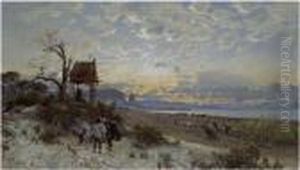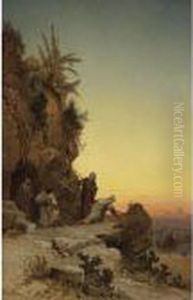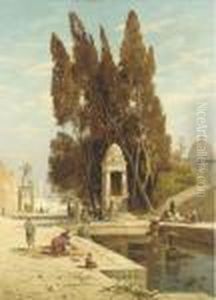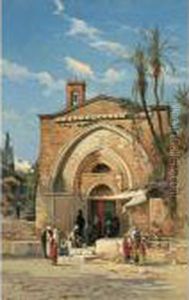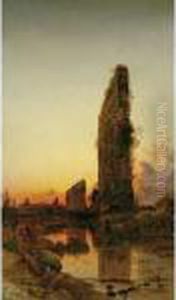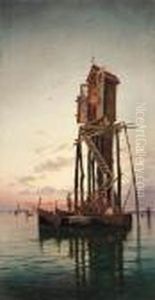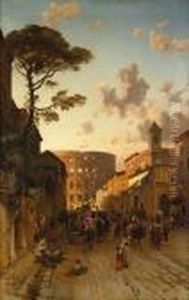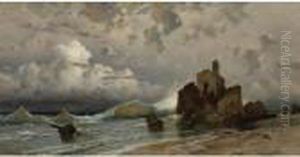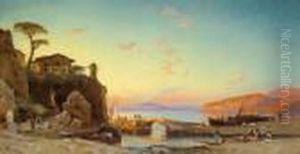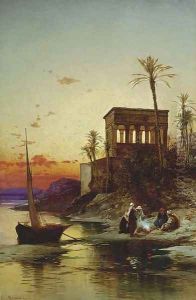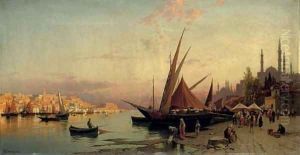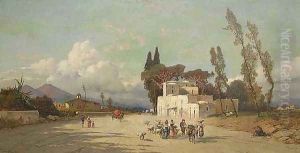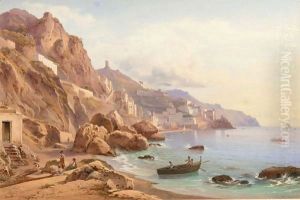Hermann David Salomon Corrodi Paintings
Hermann David Salomon Corrodi was a distinguished Italian painter of the 19th century, known for his Orientalist and landscape works. Born on July 24, 1844, in Frascati, near Rome, he was part of a family of Swiss origin. His father, Salomon Corrodi, was also a painter, and his sister, Arnolda Corrodi, was a genre painter. Corrodi received his initial artistic training from his father and later attended the Accademia di San Luca in Rome, where he further honed his skills.
During his career, Hermann Corrodi traveled extensively throughout the Middle East, North Africa, and parts of Europe, drawing inspiration from the various cultures and landscapes he encountered. His journeys took him to Egypt, Syria, Turkey, and Greece, among other locations. These travels greatly influenced his art, endowing his paintings with authenticity and exotic appeal that captivated the European audience of his time.
Corrodi's works are characterized by their meticulous detail, vibrant colors, and the ability to convey the atmospheric effects of different times of day and weather conditions. He often focused on historical and biblical scenes set in the landscapes he visited, which were popular subjects during the era of Orientalism. His paintings typically featured ruins, local inhabitants, and natural beauty, capturing the romanticized view of the East that was prevalent in Western art during the 19th century.
Hermann Corrodi enjoyed considerable success during his lifetime. He was commissioned by royal patrons, including Queen Victoria of the United Kingdom, and his works were exhibited in important art venues in Europe. Corrodi also served as a professor at the Accademia di San Luca and influenced a number of students with his techniques and artistic vision.
After a fruitful career, Hermann Corrodi passed away on January 30, 1905, in Rome. Today, his paintings can be found in various art collections and museums around the world, and he is remembered as one of the key figures in the Orientalist art movement, leaving behind a legacy of rich and evocative works that continue to be appreciated for their beauty and historical value.

